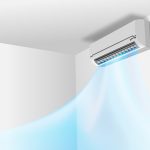How to Prevent “Harry and Marv” from Burglarizing your Home Over the Holidays
December 16, 2015
Home for the Holidays: Great Christmas Decor Ideas for Your Abode
December 18, 2015Focused on other big house-related maintenances, most people forget their hot water systems and left them unchecked for years and years. This leads to damages and leaks that can seriously harm your pipes and cost a lot of money, but also – and this aspect is often overlooked – affects your consumption of energy. Knowing that this system accounts for about 33% of the overall energy use, ignoring it is one of the worst things you can do. In order to maintain it properly, you have to know a few basics.
Properly Adjusted Slope
In general, all hot water systems include radiators, pipes and boilers that have to be in synch, properly connected and assembled in accordance with the highest standards. One of the things to pay the most attention to is the slope – unless it is well adjusted, your system will not work properly and will require frequent repairs.
Some of the most common indicators of an improper slope are hammering noises coming from your system, its inability to heat water and, ultimately, cold radiators around your home. If you want to fix this, contact an expert or just fasten the pipes and radiators yourself and check if all parts of the system are titled.
Adjust the Level of Water

If you, however, you notice that the water level is low, something needs to be done. These issues require professional assistance, so you should call an expert, we learn from the people who run Dial Up Plumbing. They need to close your water supply and check the water level for a period of three or four days in order to diagnose the problem accurately.
Expansion Tank Purpose and Safety Measures
Expansion tank might easily be the most important part of your hot water system, but it is also the part the majority of people pay little to no attention to. This tank is most frequently installed in the basement – it is hung from the ceiling – or, alternatively, in the attic especially with older systems.
The purpose of an expansion tank is to contain and control the heated water that goes into the hot water system.
Of course, the temperature of this water needs to be well above the temperature of boiling water. Only such water ensures proper heating, but it is the expansion tank that makes sure it is not converted into steam by carefully keeping it under pressure. This is why tanks need enough air as well, in order to prevent accidents, explosions and pressure-related problems. In order to ensure proper functioning, tanks should be inspected and replaced when needed, as well as drained if filled with too much water.
Finally: An Annual Check-up
If you notice that your pipes are colder than they should be, it is probably because they are clogged and need to be flushed. Moreover, the entire system should be flushed annually if you want it to be clean and ensure proper water flow. Remember how important the hot water system is to you during the winter and you will have no problem finding motivation to maintain it.





